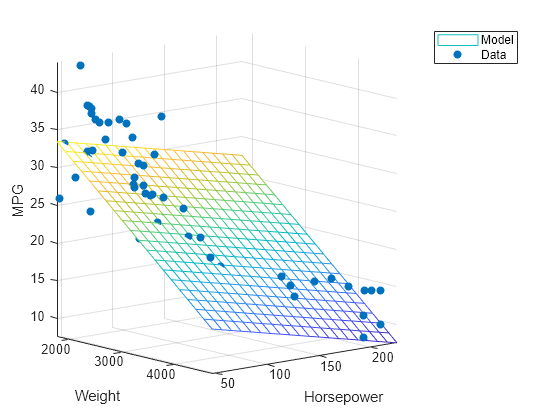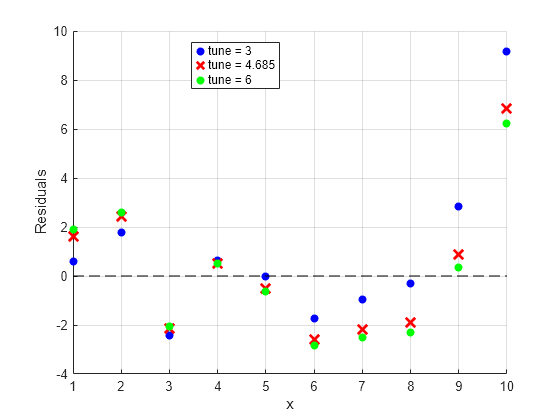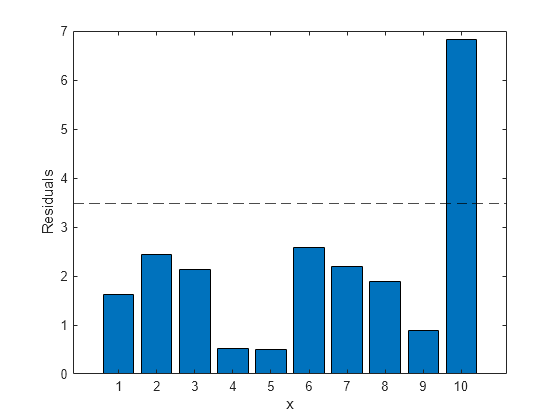robustfit
Fit robust linear regression
Description
Examples
Input Arguments
Output Arguments
More About
Tips
Algorithms
robustfituses iteratively reweighted least squares to compute the coefficientsb. The inputwfunspecifies the weights.robustfitestimates the variance-covariance matrix of the coefficient estimatesstats.covbusing the formulainv(X'*X)*stats.s^2. This estimate produces the standard errorstats.seand correlationstats.coeffcorr.In a linear model, observed values of
yand their residuals are random variables. Residuals have normal distributions with zero mean but with different variances at different values of the predictors. To put residuals on a comparable scale,robustfit“Studentizes” the residuals. That is,robustfitdivides the residuals by an estimate of their standard deviation that is independent of their value. Studentized residuals have t-distributions with known degrees of freedom.robustfitreturns the Studentized residuals instats.rstud.
Alternative Functionality
robustfit is useful when you simply need the output arguments of the
function or when you want to repeat fitting a model multiple times in a loop. If you need to
investigate a robust fitted regression model further, create a linear regression model object
LinearModel by using fitlm. Set the value for the name-value pair
argument 'RobustOpts' to 'on'.
References
[1] DuMouchel, W. H., and F. L. O'Brien. “Integrating a Robust Option into a Multiple Regression Computing Environment.” Computer Science and Statistics: Proceedings of the 21st Symposium on the Interface. Alexandria, VA: American Statistical Association, 1989.
[2] Holland, P. W., and R. E. Welsch. “Robust Regression Using Iteratively Reweighted Least-Squares.” Communications in Statistics: Theory and Methods, A6, 1977, pp. 813–827.
[3] Huber, P. J. Robust Statistics. Hoboken, NJ: John Wiley & Sons, Inc., 1981.
[4] Street, J. O., R. J. Carroll, and D. Ruppert. “A Note on Computing Robust Regression Estimates via Iteratively Reweighted Least Squares.” The American Statistician. Vol. 42, 1988, pp. 152–154.
Version History
Introduced before R2006a



